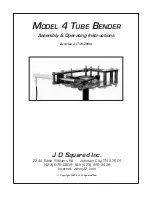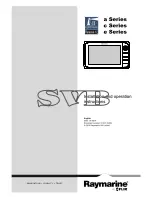
Base Force Adjustment
The clamping force between the lower adapter and the upper chuck is critical to a
good seam. In particular, the base force has a significant effect on the seam’s
body hook (more base force typically will create a larger body hook).
In general, the base force is set to just less than the maximum that the can will
take before it collapses. If your cans are denting and/or collapsing when closing
the splash guard door then it is possible that the base force is too high.
(Note:
cans that are empty are much more likely to crush than a full can)
Before adjusting the base force, make sure the wave spring and washers are
located correctly inside the lower adapter (see MODEL 7 SEAMER DIAGRAM).
To adjust the base force, first back off the lower base adjuster nut a couple turns.
Note: the lower nut’s function is to take up play in the base adjuster. The upper
nut is used to set the actual base force.
You will need an un-seamed can and end to set the base force.
Turning the upper base adjuster nut clockwise will increase the base force, while
turning it counterclockwise will decrease it.
To RESET the base force:
1)
With a can loaded into the seamer, use the upper nut to lower the base
force to nearly zero. As you adjust the nut, the handle will feel lighter and lighter
until the can never fully clamps. Its helpful to disconnect the splash guard from
the handle.
2)
Once the force is set to zero, rotate the upper nut:
1-5/6 turns for 200 and 202 ends (11-12 “flats” of the side of the nut)
2-5/6 turns for 206 ends (16-18 “flats” of the side of the nut)
2-1/2 turns for 300 ends (15-16 “flats” of the side of the nut)
3)
Snug up the lower base adjuster nut
4)
Test a can by seaming it and measuring the body hook. If it is sufficient
then the base force is also sufficient.
Summary of Contents for 7
Page 4: ...MODEL 7 SEAMER DIAGRAM...








































